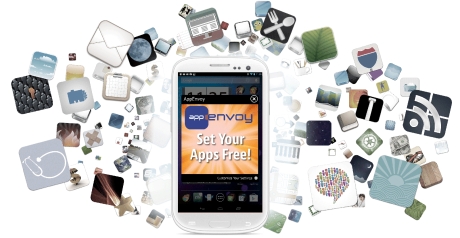Mobile Posse, the company that revolutionizes home and lock screen messaging to boost app engagement, today announced that Eric Newman, its vice president of research and development, will headline the ModevDC LunchLab at UberOffices McLean, Virginia location on Thursday, July 17, 2014 at 11:30 a.m. The topic will be “Push Messaging 2.0: A New Way to Boost App Engagement and Monetization.”
“Now that push notifications are common place, app developers have to break through the clutter to really reach their targets,” said Newman. “This workshop will introduce app developers to ‘Push Messaging 2.0’ — the newest way to boost the impact of an app’s push notifications. We will focus on specific, rich-media push strategies that are consumer-friendly, engagement-oriented and effective.”
Attendees will learn how to turn ordinary text notifications that often get lost in the notification tray into superior, interactive rich push messaging to engage their subscribers directly on the home and lock screen. Additionally, attendees will learn:
- How to impact your app engagement and increase/create monetization with more effective push
- How to integrate “Push Messaging 2.0” with an app
- How messaging using large-format visuals, call-to-action links and even video can quickly be added to apps via an easy-to-integrate SDK
This installment of the series will feature a free lunch provided by Mobile Posse and opportunities to network and conduct Q&A. The event is intended for mobile developers, designers, marketers and entrepreneurs. Recruiters are welcome to attend with sponsorship. If you are interested in attending, please visit: http://bit.ly/1zBZeuU
About Mobile Posse:
Mobile Posse is revolutionizing app engagement on the most valuable real estate on mobile phones — the home and lock screens. We’re building on a business-proven and consumer-friendly platform that has delivered more than 50 billion messages to help app publishers break through mobile clutter, drive the highest engagement and generate new revenue. Mobile Posse is headquartered in McLean, VA. For more information, please visit http://www.mobileposse.com and follow Mobile Posse on Twitter and LinkedIn.
About Modev:
Modev organizes meetups, conferences, contests and academies to advance the fields of development, design and marketing of technologies. For more information, please go to http://www.modev.com.

